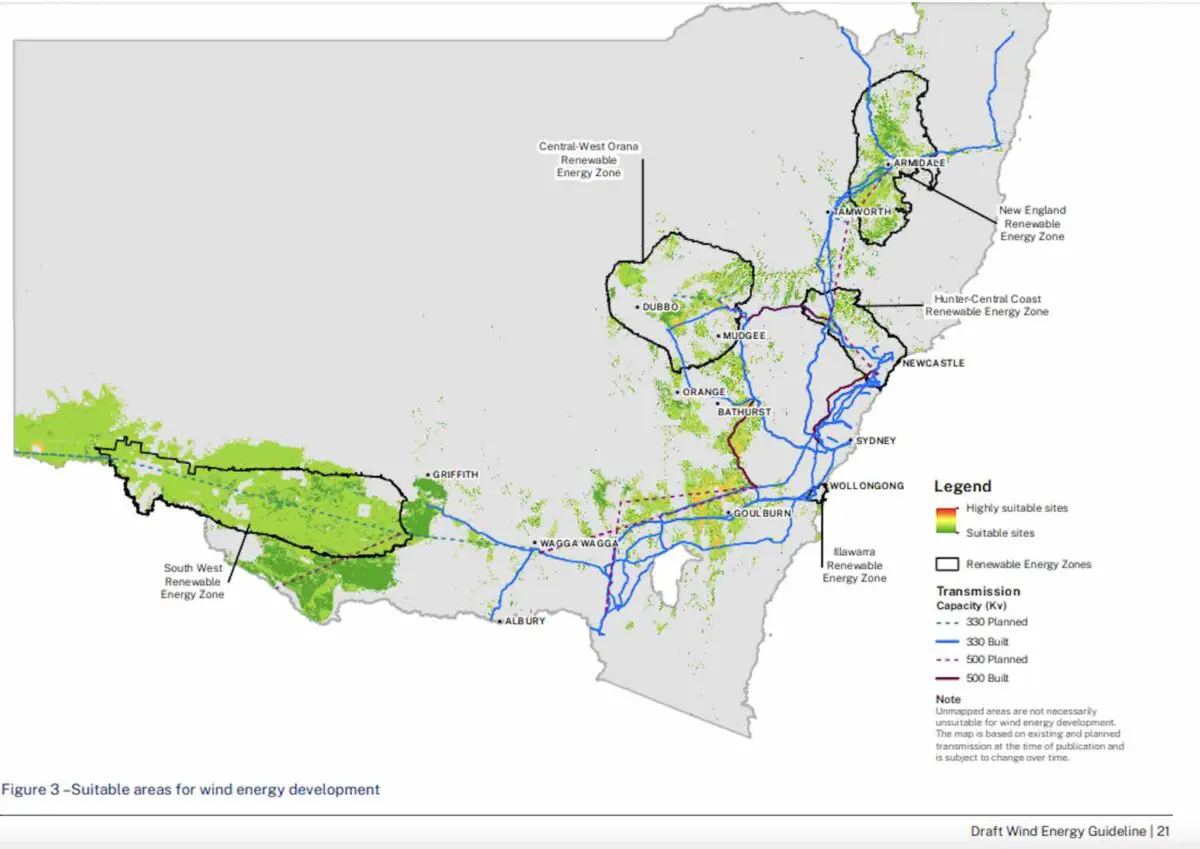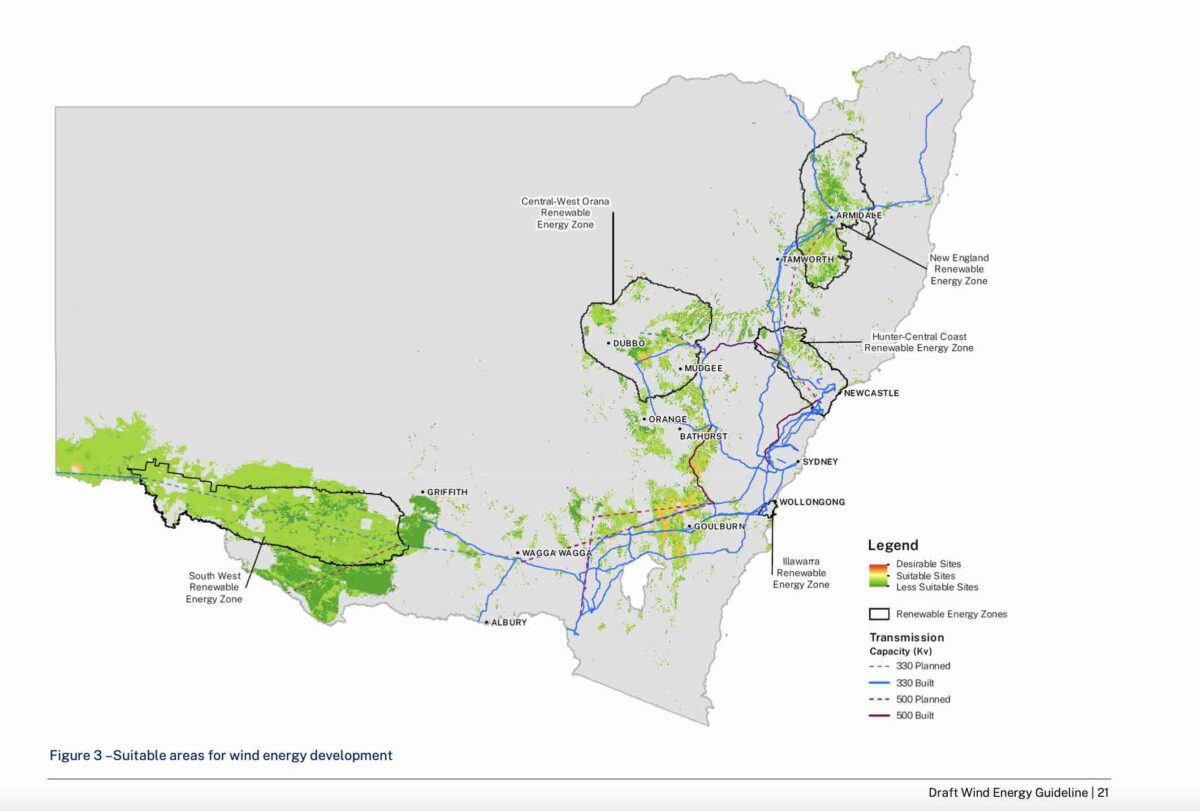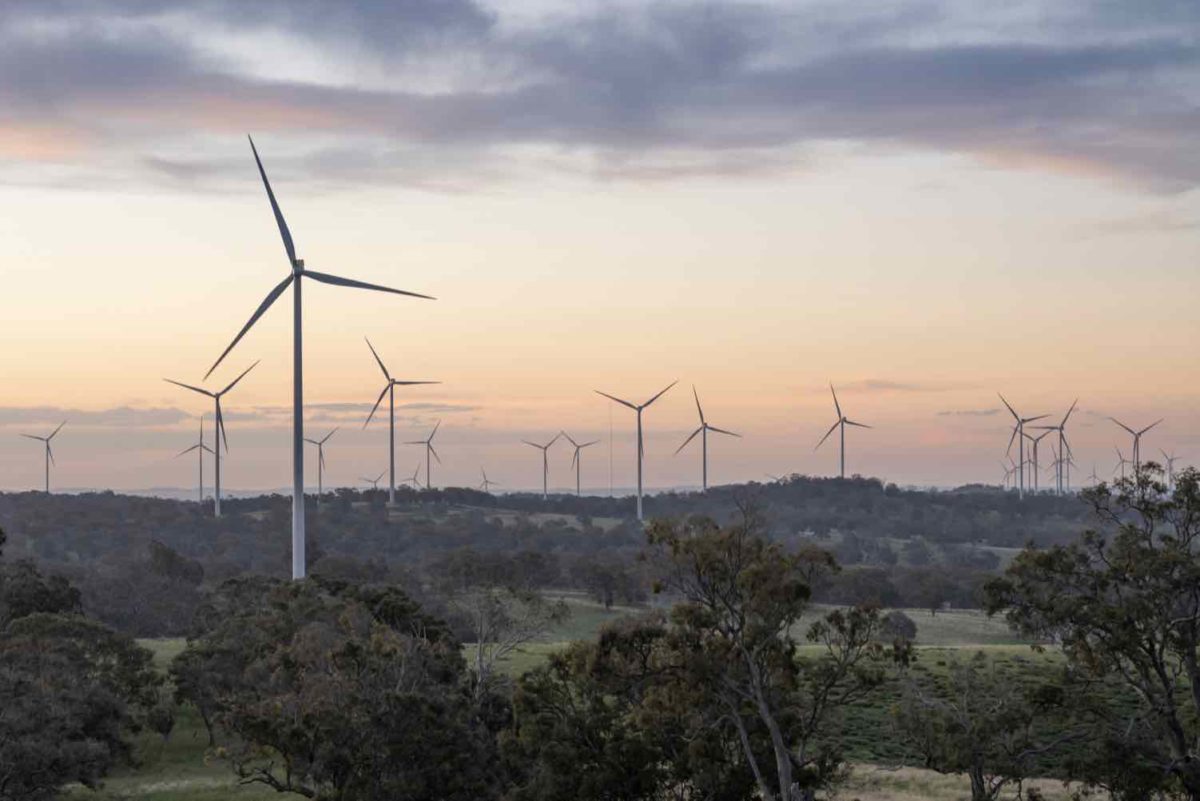The NSW Planning Department has performed a backflip on the map accompanying its new draft wind energy guidelines, now declaring that just about everywhere in the state is regarded as “suitable” for wind farms, in contrast to the map that was released earlier this week.
The planning department issued an advisory on Friday saying that the original map – which had horrified the industry because it declared almost the entire state as “less suitable”, and very few areas to be “desirable” – had now been changed.
What has been changed is the map legend. Instead of three descriptors of “desirable”, “suitable” and “less suitable”, there are now only two descriptors – “highly suitable” and “suitable.” (See map just below).
That means that all the areas mapped – within and near the five new renewable energy zones and along the transmission lines that link them – are now deemed as “suitable”. Some small pockets are deemed to be “highly suitable.”

The industry welcomed the changes, but said it highlighted lingering concerns about disfunction and miscommunications within the state planning department. And it is still worried about some of the draft proposals.
The original map (see it at end of article) – which was described as “farcical” by many in the industry – led to accusations that the NSW Labor government is torn between competing motives in the energy department and the planning department, and it raised concerns about its ability to navigate the switch from coal to renewables.
Energy minister Penny Sharpe has been consistent in her message of wanting to accelerate the rollout of transmission lines, wind, solar and storage to enable the state to retire what is the biggest coal fleet in the country, possibly within a decade.
But delays in transmission, connections, and in planning (only two wind farms approved in the last four years) has raised concerns about the state’s ability to replace coal capacity before it has retired.
The NSW government has been urged by an independent review to negotiate a possible extension to the Eraring coal generator, the nation’s biggest which is currently scheduled to close in August, 2025, possibly extending the life of two units by another couple of summers.
“We have updated the ‘Suitable areas for wind energy development’ map in the draft Wind Energy Guideline to clarify that all of the mapped areas are suitable for wind energy development,” the department wrote on Friday.
“The map shows varying levels of suitability within the most desirable areas of the state. This is based on technical, economic and environmental factors.”
RenewEconomy asked the department why the map legend had been changed.
“The guidelines are designed to promote faster decisions, provide certainty to investors and industry, and improve transparency for communities,” said a spokesman for the Department of Planning and Environment.
“Unfortunately, some stakeholders weren’t clear on one of the maps in the draft wind energy guideline currently on exhibition.
“The department has provided clarification and looks forward to submissions to inform the final version of the guide.”
One of the biggest concerns from the draft guidelines has been a new rule on 2km setbacks from existing or proposed “dwellings” that wind farm proponents fear can be used by anti-wind activists to cause projects to be re-drawn or abandoned.
Few wind farms have been approved in recent years, and those currently going through the process are reportedly having to deal with this issue, even though the government insists that the new setback is a “draft” only.
The industry has warned that if this draft rule is not changed – as it has warned the government since earlier this year – it could effectively turn large parts of the state into a no-go zone, as the original map indicated.
“CEIG welcomes the clarification issued today concerning locations suitable for wind farm development. We will be seeking further advice on this change and other issues being raised by investors,” said Simon Corbell, the head of the Clean Energy Investor Group.
“To achieve the best possible outcomes for improved assessment of clean energy projects in NSW it is important that the consultation period allows for further improvements to be made.”
It comes at a vital time in NSW, with climate science warning of a world cascading towards 1.5°C and severe impacts, a looming El Nino summer, the increasing unreliability of ageing coal generators, and a growing and voluble anti-renewable movement fuelled by the pro-nuclear federal Opposition.
However, the changes in the grid – despite the numerous project delays – are still being driven by households and business turning to rooftop solar, and are already catching the market, and its regulators and operators, off guard.
This week the Australian Energy Market Operator had to direct some synchronous generators on to the market because half the coal fleet was missing in action due to repairs and maintenance.
So-called “system strength” can be provided by synchronous condensers (spinning machines that do not burn fuel) and grid forming battery inverters, but not enough of this capacity has been installed yet in NSW.
Meanwhile, the share of renewables continues to grow, particularly during the day where the growth of rooftop solar and large scale solar is having a major impact.
Last week the share of “potential” renewable output reached more than 100 per cent of NSW demand, but some of that was curtailed due for economic reasons, or network constraints.
A number of big battery projects are underway – most notably the Waratah Super Battery at the shuttered Munmorah coal fired generator on the central coast.
This will be the biggest in Australia when complete – at least for a time – and will act as a form of giant shock absorber that allows transmission lines to be used at greater capacity to deliver power from renewable energy zones to big load centres.











